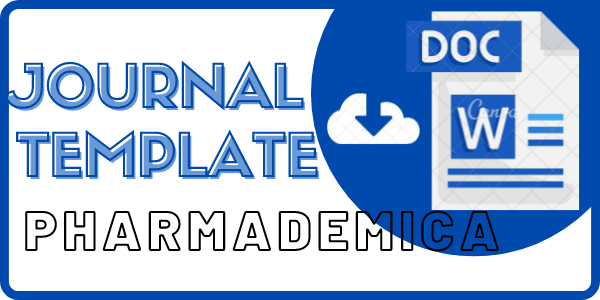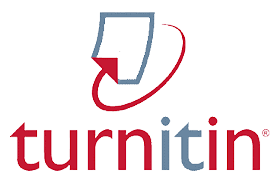The Relationship between Iron, Protein Intake, and Skipping Meal Habit with the Incidence of Anemia in Adolescent Girls at SMP Negeri 16 Samarinda
DOI:
https://doi.org/10.54445/pharmademica.v5i1.85
 Abstract View:
Abstract View:
326
 PDF downloads:
PDF downloads:
480
Keywords:
anemia, adolescent girls, iron intake, meal-skipping habits, protein intakeAbstract
Anemia was a condition characterized by a small number of red blood cells and was commonly experienced by adolescent girls due to menstruation and increased nutritional needs during growth. In 2023, the highest number of anemia cases in the working area of Puskesmas Loa Bakung, Samarinda, was found among female students of SMP Negeri 16 Samarinda, with a prevalence of 25% out of 190 cases. The purpose of this study was to analyze the association between iron intake, protein intake, and the habit of skipping meals with the incidence of anemia among female students at SMP Negeri 16 Samarinda. A cross-sectional design was used for this study. As much as 72 respondents were selected with purposive sampling. Data for this study was collected through haemoglobin (Hb) testing, interviews using the SQ-FFQ questionnaire and a meal-skipping questionnaire. A total of 37 (51.4%) female students suffered from anemia, 56 (77.8%) female students consumed adequate protein intake, and 67 (93.1%) female students had insufficient daily iron intake. As much as 55 (76.4%) female students did not regularly eat breakfast. Statistical analysis showed a significant relationship between iron intake (p=0.023), protein intake (p=0.010), and the habit of skipping breakfast (p=0.038) with anemia. However, this study didn’t find any association between skipping lunch (p=0.207) or dinner (p=0.658) with anemia. It was necessary to raise awareness among adolescent girls about the importance of breakfast and consuming nutritious foods, especially those rich in iron and protein to prevent anemia and support healthy development during adolescence.
Downloads
References
Abby, S. O., Arini, F. A., Sufyan, D. L., & Ilmi, I. M. B. (2023). Hubungan Kepatuhan Konsumsi TTD, Asupan Zat Gizi, dan Status Gizi Terhadap Kejadian Anemia pada Remaja Putri Di SMPN 1 Gunungsari. Amerta Nutrition, 7(2SP), 213–223. https://doi.org/10.20473/amnt.v7i2sp.2023.213-223
Agustia, J., Margareth, W., & Marbun, R. M. (2024). Hubungan Siklus Menstruasi, Konsumsi Tablet Tambah Darah (TTD) Dan Asupan Vitamin C Dengan Status Anemia Pada Siswi SMAN 27 Jakarta. Antigen: Jurnal Kesehatan Masyarakat Dan Ilmu Gizi, 2(1), 44–63.
Alfiah, S., & Dainy, N. C. (2023). Asupan Zat Besi, Vitamin C dan Konsumsi Tablet Tambah Darah Berhubungan dengan Kejadian Anemia Remaja Putri SMPIT Majmaul Bahrain Bogor. Jurnal Ilmu Gizi Dan Dietetik, 2(2), 103–108. https://doi.org/10.25182/jigd.2023.2.2.103-108
Anisa Yulianti, Siti Aisyah, & Sri Handayani. (2024). Faktor-Faktor yang Berhubungan dengan Anemia pada Remaja Putri. Lentera Perawat, 5(1), 10–17. https://doi.org/10.52235/lp.v5i1.276
Anwar, K., & Anggita, T. (2024). Hubungan Asupan Protein, Vitamin C Dan Zat Besi Terhadap Status Gizi Dan Kejadian Anemia Pada Siswi Di MTS Al-Mukhsin. Binawan Student Journal, 6(1), 48–57. https://doi.org/10.54771/rdzdsg38
Ayu Rosanti, Catur Yulinawati, Nelli Roza, & Andi Wilda Arianggara. (2022). Hubungan Kebiasaan Makan Dengan Kejadian Anemia Pada Remaja Putri Di Wilayah Kerja Puskesmas Bulang Kota Batam. Jurnal Info Kesehatan, Vol. 12, N(2), 509–515.
Esquius, L., Aguilar-Martínez, A., Bosque-Prous, M., González-Casals, H., Bach-Faig, A., Colillas-Malet, E., Salvador, G., & Espelt, A. (2021). Social inequalities in breakfast consumption among adolescents in Spain: The DESKcohort project. Nutrients, 13(8), 1–15. https://doi.org/10.3390/nu13082500
Gardner, W. M., Razo, C., & McHugh, T. A. (2023). Prevalence, years lived with disability, and trends in anaemia burden by severity and cause, 1990–2021: findings from the Global Burden of Disease Study 2021. The Lancet Haematology, 10(9), 1–22. https://doi.org/10.1016/S2352-3026(23)00160-6
Giménez-Legarre, N., Miguel-Berges, M. L., Flores-Barrantes, P., Santaliestra-Pasías, A. M., & Moreno, L. A. (2020). Breakfast characteristics and its association with daily micronutrients intake in children and adolescents–a systematic review and meta-analysis. Nutrients, 12(10), 1–23. https://doi.org/10.3390/nu12103201
Hamidiyah, A. (2020). Hubungan Asupan Nutrisi Dengan Kejadian Anemia Pada Remaja Putri. JOMIS (Journal of Midwifery Science), 4(1), 1–8. https://doi.org/10.36341/jomis.v4i1.1091
Hardiansyah, A., Violeta, Z. S., & Arifin, M. (2023). Pengetahuan Tentang Anemia, Asupan Protein, Zat Besi, Seng Dan Kejadian Anemia Pada Remaja Putri. Medika Respati : Jurnal Ilmiah Kesehatan, 18(4), 213. https://doi.org/10.35842/mr.v18i4.802
Hidayati, Y., Sulastri, D., & Utama, B. I. (2023). Hubungan Asupan Protein dan Zat Besi dengan Kejadian Anemia Defisiensi Besi pada Remaja Putri di SMP Negeri 31 Padang Yusmalia. Jurnal Majalah Kedokteran Andalas, 46(2), 385–393.
Kamaruddin, M., Supu, L., Sada, M., & Marsella, Y. (2022). Nilai Gizi dan Daya Terima Cookies dengan Penambahan Bayam Merah dan Hati Ayam sebagai Upaya Pencegahan Anemia pada Remaja Putri. JGK: Jurnal Gizi Dan Kesehatan, 2(1), 31–37. https://doi.org/10.36086/jgk.v2i1.1259
Musfira, M., & Hadju, V. (2024). Nutrition and Dietary Intake of Adolescent Girls in Indonesia: A Systematic Review. Scripta Medica (Banja Luka), 55(4), 473–487. https://doi.org/10.5937/scriptamed55-49461
Sayed, S. F., & Nagarajan, S. (2022). Haemoglobin status to determine nutritional anaemia and its association with breakfast skipping and BMI among nursing undergraduates of Farasan Island, KSA. Journal of Nutritional Science, 11(7), 1–10. https://doi.org/10.1017/jns.2022.33
Simatupang, A. M., Dewi, Y. L. R., & Andayani, T. R. (2024). Accuracy of Dietary Assessment Methods as a Measurement of Micronutrient Intake in Adolescents: Scoping Review. Amerta Nutrition, 8(4), 642–653. https://doi.org/10.20473/amnt.v8i4.2024.642-653
Thamrin, H., & Masnilawati, A. (2021). Hubungan antara Pengetahuan, Tingkat Konsumsi Protein, Zat Besi, dan Vitamin C dengan Kadar Hemoglobin pada Mahasiswi Kebidanan. Jurnal Penelitian Kesehatan Suara Forikes, 12(April 2021), 30–33. https://doi.org/10.33846/sf12nk206
Yamamoto, R., Tomi, R., Shinzawa, M., Yoshimura, R., Ozaki, S., Nakanishi, K., Ide, S., Nagatomo, I., Nishida, M., Yamauchi-Takihara, K., Kudo, T., & Moriyama, T. (2021). Associations of Skipping Breakfast, Lunch, and Dinner with Weight Gain and Overweight/Obesity in University Students: A Retrospective Cohort Study. Nutrients, 13(1), 1–14. https://doi.org/10.3390/nu13010271
Zahrah, N. I., Fanani, M., & Ardyanto, T. D. (2023). The Relationship Between Emotional Eating, Meal Skipping and Unhealthy Food Consumption Pattern in Adolescent Girls. Indonesian Journal of Public Health, 18(1), 47–58. https://doi.org/10.20473/ijph.v18i1.2023.47-58
Downloads
Published
How to Cite
Issue
Section
License
Copyright (c) 2025 Sri Shinta Awalinda, Erri Larene Safika, Leny Eka Tyas Wahyuni, Ismail Ismail , Nurul Afiah

This work is licensed under a Creative Commons Attribution-ShareAlike 4.0 International License.









.png)








